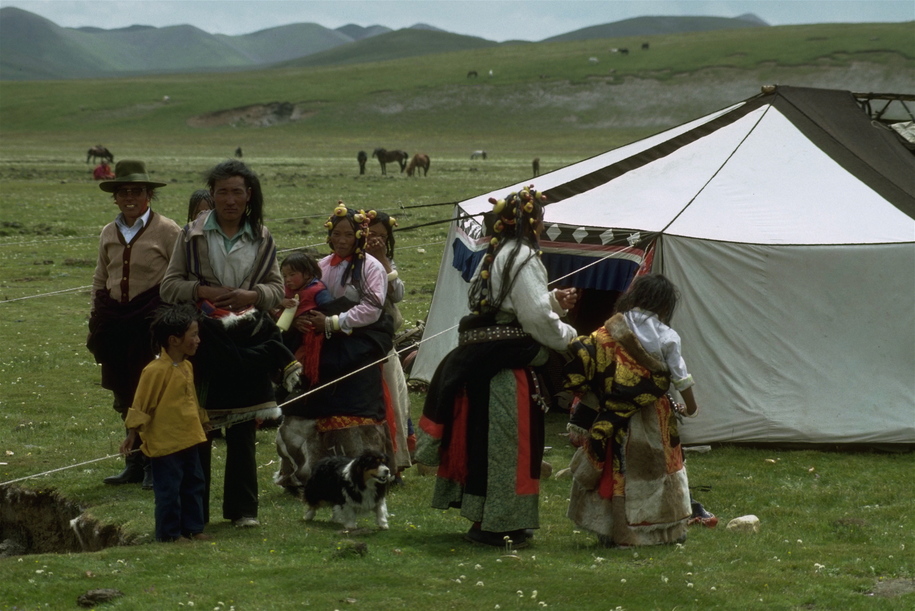
Searching for Grass and Water: Tibet's Last Nomads
Photographer: Daniel Miller
Exhibit Title: Searching for Grass and Water: Tibet's Last Nomads
Location: China
From a global environmental perspective, few other places in the world are as important as the grazing lands of the Tibetan Plateau now. Rising concerns about climate change, global warming, melting glaciers, food security, water, and loss of biodiversity all point to the significance of the Tibetan rangelands in addressing these global challenges. Tackling these important global issues requires that more attention be paid to the people that make a living on the grasslands of the Tibetan Plateau – Tibetan nomads. The fact that Tibetan nomads have managed to survive attests to the rationality and efficacy of many aspects of traditional Tibetan nomadic pastoral production. Over thousands of years, Tibetan nomads accommodated to their environment, learning to live with what it offered instead of changing and molding the landscape to suit their needs, as farmers try to do. Thus, Tibetan nomads have much to teach us about living in harmony with the land.
In the last quarter century, the nomadic pastoral areas on the Tibetan Plateau have seen far-reaching changes. These changes are radically transforming age-old livestock production methods, land-use practices and the socio-economic fabric of Tibetan society. Many rangelands that used to be managed communally by tribes or groups of nomads have been privatized, allocated to individual households and fenced. Conflicts over grazing rights and water have led to “range wars” in some areas. Fences have curtailed seasonal movements of nomads’ livestock, leading to overgrazing in many places. Fences have also triggered conflicts with wildlife, especially Tibetan wild ass and antelope.
Chinese authorities, concerned with environmental degradation, are moving nomads out of the grasslands and settling them in towns, but Tibetan nomads are often ill equipped for this new type of existence, lacking the education and skills to find gainful employment. What happens when nomads are forced to settle and move into towns? Is their indigenous knowledge of the rangelands and livestock lost? Is their relationship with the environment severed? These are important questions that require answers in order to develop the rangelands of the Tibetan Plateau in a sustainable manner and in ways that are sensitive to the needs and desires of the Tibetan nomads.
There will be a great and tragic emptiness if the irreplaceable Tibetan nomadic culture is transformed beyond recognition because of inappropriate policies and development interventions. The survival of the Tibetan Plateau environment, with its globally strategic water resources and extensive rangelands providing livelihoods for millions of nomads and farmers depends on greater appreciation of Tibetan nomads and their worldview and a rethinking of current nomad settlement schemes. It also requires new attitudes that view the landscape more holistically, with a greater sense of its intrinsic beauty as well as the economical value of its natural resources.
Twelve hundred years ago, with remarkable prescience, Tibetans viewed their homeland as the “Heart of the World.” A 9th century Tibetan document attests to the special significance Tibetans attributed to their land over one-thousand years ago:
This center of heaven,
This core of the earth,
This heart of the world,
Fenced round by snow,
The headland of all rivers,
Where the mountains are high and the land is pure.
The world now needs to ensure that the Tibetan Plateau remains healthy and continues to provide vital ecosystem services. As a first step, we could begin to acknowledge the hallowed nature of the Tibetan landscape and start to treat it with a little more reverence and respect as Tibetan nomads have done for centuries.
wildyakman@gmail.com
Make Comment/View Comments